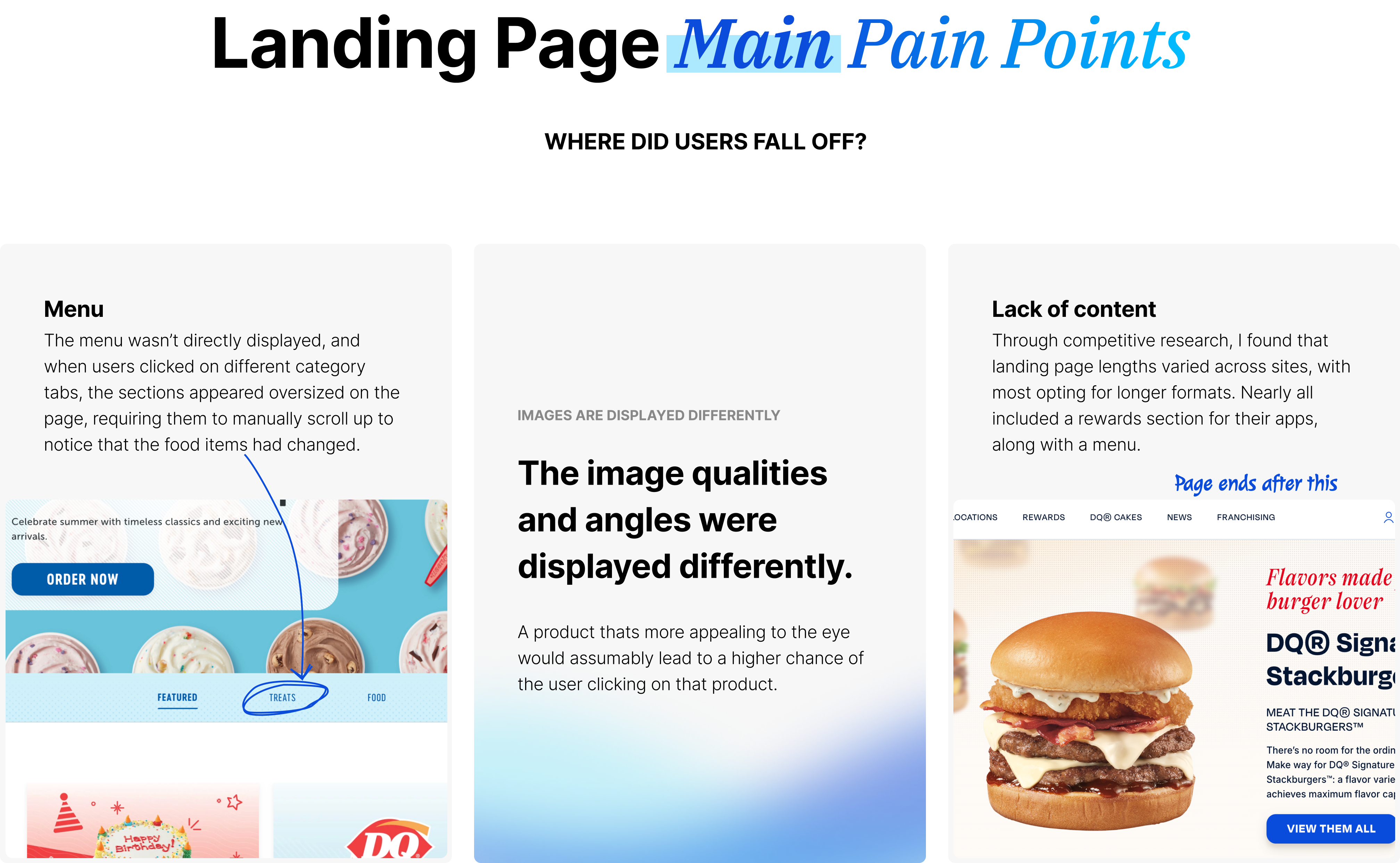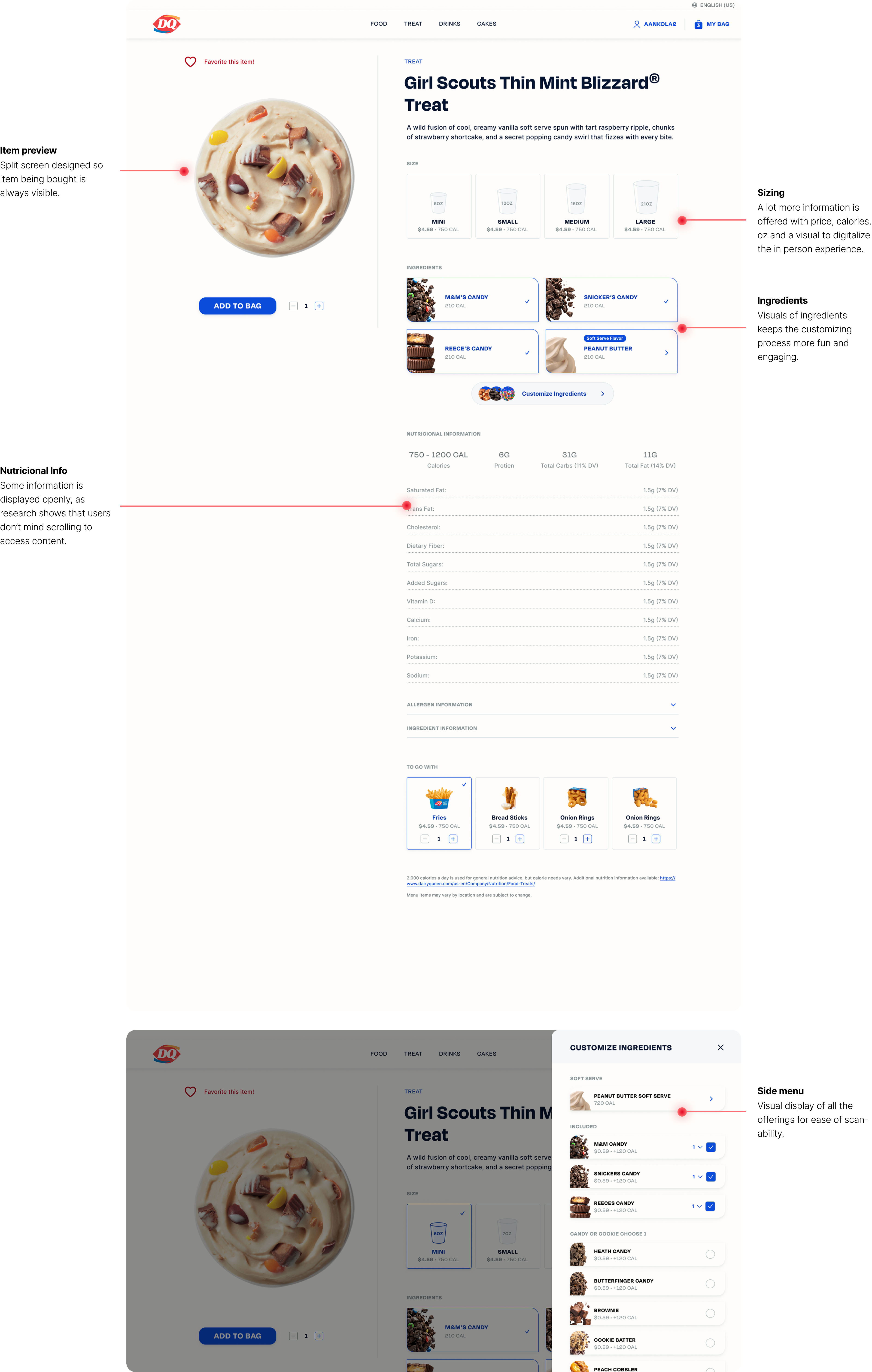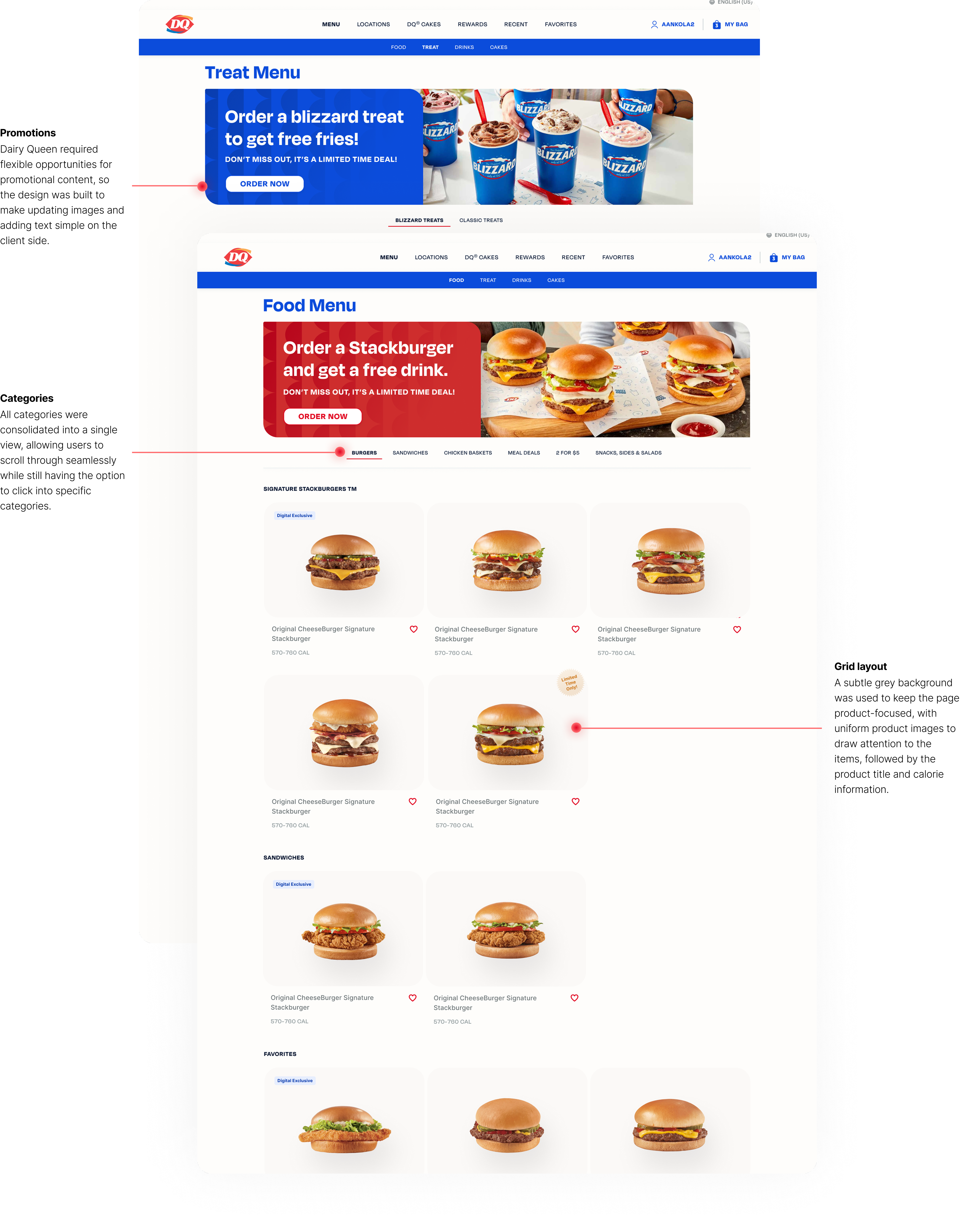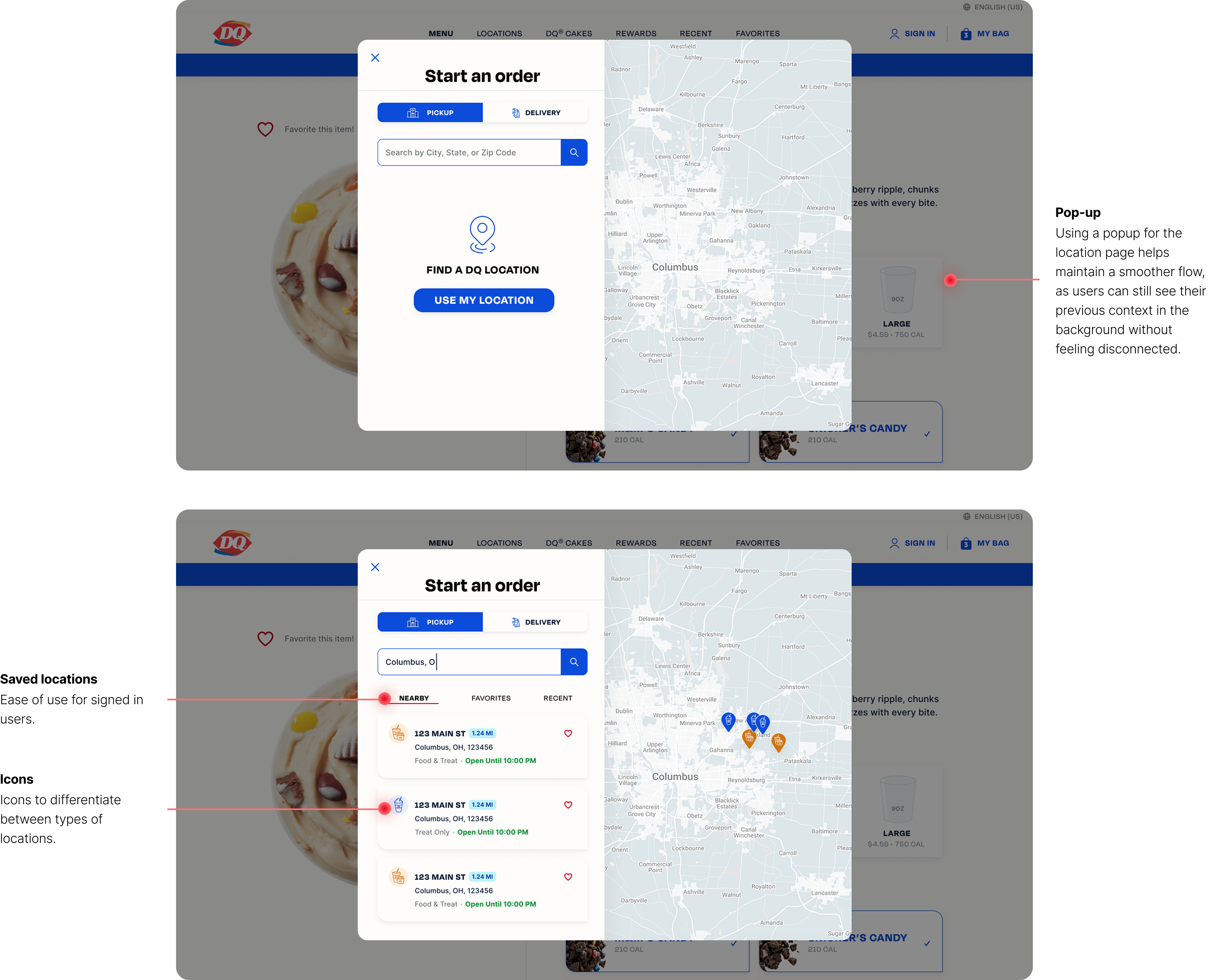Checkout Flow

Dairy Queen is a global quick-service restaurant brand.
They're known for its soft-serve ice cream, frozen treats, and fast food offerings. With thousands of locations worldwide, DQ focuses on delivering a fun, family-friendly dining experience.

The website ordering flow was struggling compared to the app.
After comparing the website to the app, it was discovered that the website’s ordering flow was struggling due to its setup and lack of ease and intuitiveness. Many users felt deterred from using it, which could potentially prevent them from placing an order altogether.

I conducted a wireframe using the research I was given from user interviews and competitors to understand pain points.
The final product is slightly different from the wireframe due to realizing constraints and issues throughout the design process.

There were constraints for buttons, patterns, fonts, colors, formatting and more due to pre-existing branding guidelines and a design system.
A challenge that I was faced with includes learning a set of design rules set by the client but also having nothing to reference because we were in the middle of a "Brand Refresh" meaning there was a very slight update being made to the colors, patterns, formatting, and more. The slight differences were hard to follow. I navigated this by consulting with my mentors and understanding what the client was trying to capture through their examples that they provided and the work that the other designers were doing.













Overall I learned that it's important to consider technical constraints, recommendations from other teams, pivoting approaches, and considering feasibility.
I learned that working for a client at a company isn’t always a linear process. There are technical requirements — in this case Olo, Braze, and the Engineering team’s recommendations — as well as limits on what each sprint can accommodate.
For example, as a designer I can provide research and explanations for why a feature is needed, but disagreement from Engineering or incompatibility with third-party platforms might force me to go back to the drawing board.
One example is when I pitched the idea of live previews to the client. Through research, client interviews, and competitive analysis, I learned that people want to see what their product looks like before buying it. However, implementing this would require rebuilding existing systems, greater engineering effort, and higher costs — making adoption difficult.